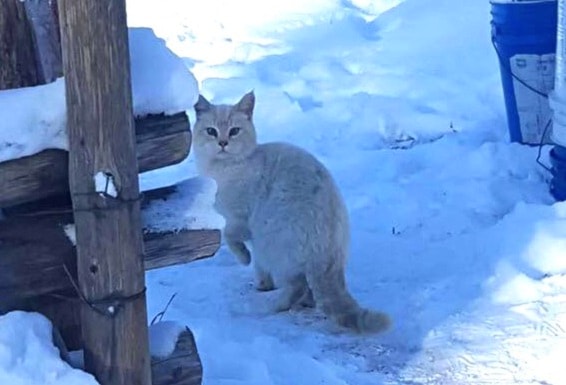The issue of feral cats in the Okanagan, including the Kelowna and West Kelowna areas, continues to be a problem.
But a local group—the Okanagan Cat Coalition—is taking steps to help deal with the proliferation of wild cats with its trap, neuter and re-home program. And it feels it is making headway.
The coalition, made up of the Kelowna branch of the SPCA, the Okanagan Humane Society, TRACS, the Alley Cats Alliance and the Westbank First Nation, feels it is making some progress in reducing the numbers of wild cats here and co-ordinator Romany Runnalls said it has already had reports of fewer kittens seen in areas where feral cats have been trapped, in the past.
After being trapped, they are neutered or spayed, looked at by a vet and either returned to the area where they were caught or “re-homed” as quickly as possible. (Re-homing can include being adopted out to become house cats or sent to live on farms because they are too wild to live in doors but can become barn cats.)
“The proof will be in the (future) kittens,” said Runnalls, noting residents living in the Leathead and McCurdy Road areas have reported fewer kittens this year after 200 wild cats were rounded up earlier. Recently, 23 cats were trapped in the Black Mountain areas and Runnalls said all of them have now been re-homed.
She said while the impact of wild cats on the local bird population is a concern, her group does not want to entirely eradicate the area of feral cats because they help with another growing area problem—rats.
Runnalls said the coalition has received tremendous support from area veterinary clinics, with 14 agreeing to help not only to spay and neuter cats trapped by OCC volunteers, but to offer other veterinary services and do so quickly so adult cats, if need be, can be returned to the wild to care for kittens if they have any.
“We are trying to do this in as humane a way as possible,” she said.
The issue of wild cats will also be tackled from a public education perspective this year with a campaign aimed at keeping cats from being abandoned in the wild and left to procreate, thus leading to more feral cats and more colonies of cats in the area.
While the coalition started as one covering the area from Peachland to Lake Country, it has expanded its reach since being formed in 2015, and has now dealt with cat colonies from as far away as Oliver and Enderby.
And, while entirely volunteer driven and funded by donations, the coalition has been successful, through its partners, at securing some grants help with its work.
The Westbank First Nation for instance helped trap 100 cats on its lands and has adopted some recommendations from the coalition for a new cat bylaw it is creating.
The coalition does not have a website but has a Facebook page—Okanagan Cat Coalition—that provides information and photos of cats it has caught. It also has an email address, okcatcoalition@gmail.com where questions can be asked.
One of the programs the coalition currently has in place is home-made boxes to help keep shelter wild cats as the winter weather sends this area into a deep freeze. The boxes, made out of plastic totes, styrofoam boxes and straw can be easily made by anyone concerned about the welfare of wild cats or pre-made ones can be picked up from the coalition.
To give an indication of how big the problem with feral cats is in this area, Runnalls said the coalition has, to date, received 450 reports of wild cat colonies, each between two and 100 cats.
